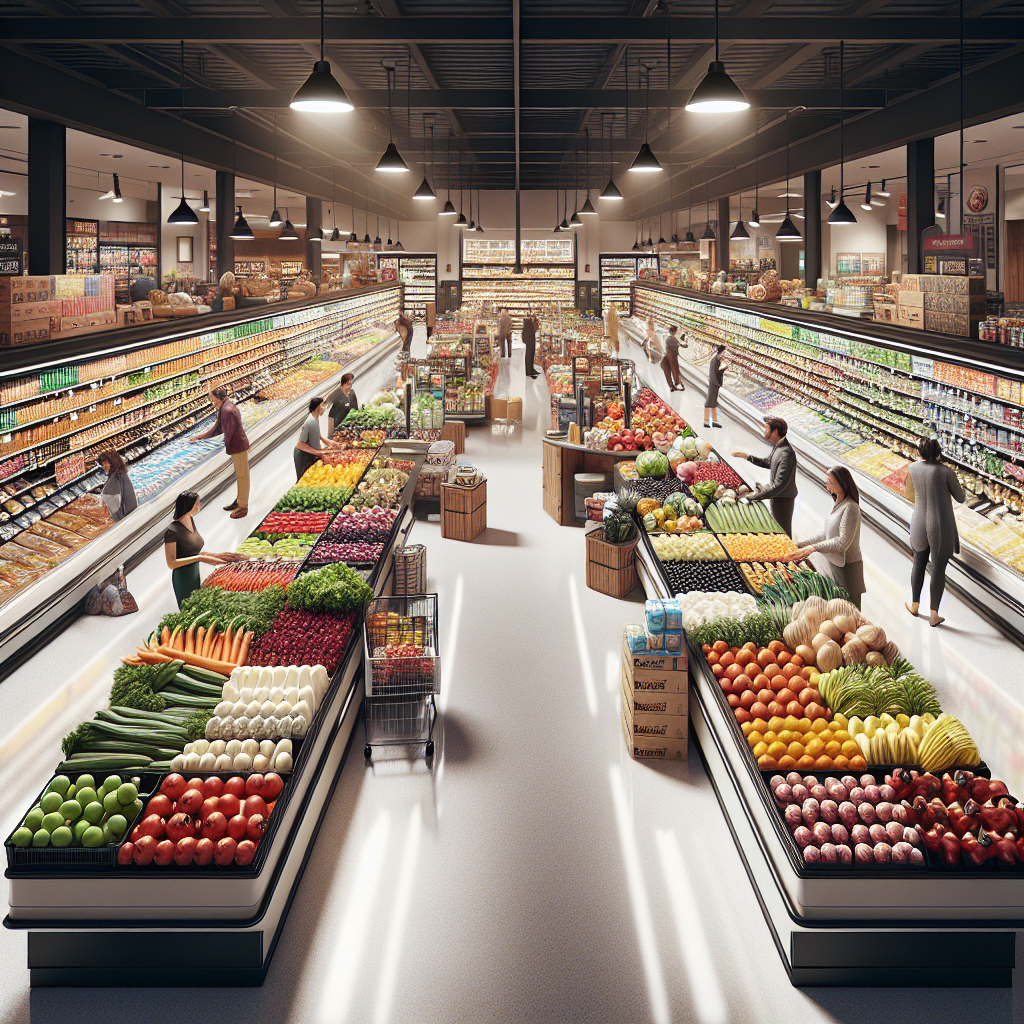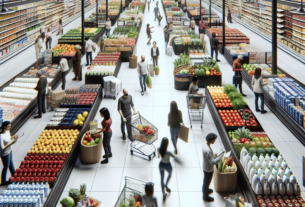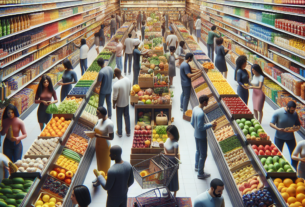Introduction
In 2025, the grocery retail industry is facing significant changes due to shifts in consumer behavior. Understanding these changes and adapting to them is crucial for grocery retailers to stay competitive in the market. This report will provide insights into what grocery retailers need to know about consumer behavior in 2025, including trends, challenges, and opportunities.
Current State of the Grocery Retail Industry
According to a report by CulinaryCoverage.com, the global grocery retail industry is projected to reach a value of $12.24 trillion by 2025. This growth is driven by increasing urbanization, rising disposable incomes, and changing consumer preferences. In 2025, online grocery sales are expected to account for 20% of total grocery sales, up from 10% in 2020.
Market Share and Competition
The grocery retail industry is highly competitive, with major players such as Walmart, Amazon, and Alibaba dominating the market. In 2025, these retailers are expected to continue expanding their market share through investments in technology and delivery services. Regional players are also gaining traction, especially in emerging markets where online grocery penetration is still low.
Consumer Behavior Trends
Consumer behavior in the grocery retail industry is evolving rapidly, driven by changing demographics and preferences. In 2025, consumers are increasingly looking for convenience, sustainability, and personalized shopping experiences. This has led to a rise in demand for online grocery shopping, meal kits, and curated shopping experiences.
Impact of Technology on Consumer Behavior
Technology plays a crucial role in shaping consumer behavior in the grocery retail industry. In 2025, advances in artificial intelligence, machine learning, and robotics are enabling retailers to offer personalized recommendations, streamline operations, and enhance the shopping experience. For example, retailers are using predictive analytics to forecast demand and optimize inventory levels, reducing waste and improving profitability.
Online Shopping and Delivery Services
Online shopping and delivery services have become increasingly popular among consumers, especially in urban areas where convenience is a key priority. In 2025, retailers are investing in last-mile delivery solutions, such as drones and autonomous vehicles, to improve speed and efficiency. This has led to a rise in same-day and one-hour delivery options, making it easier for consumers to access fresh groceries whenever they need them.
Personalized Recommendations and Loyalty Programs
Personalized recommendations and loyalty programs are also driving consumer behavior in the grocery retail industry. In 2025, retailers are using data analytics and machine learning algorithms to offer tailored product recommendations based on individual preferences and purchase history. This not only improves the shopping experience but also increases customer loyalty and retention.
Challenges and Opportunities for Grocery Retailers
While there are significant opportunities for growth in the grocery retail industry, there are also challenges that retailers need to address to stay competitive. Understanding these challenges and opportunities is essential for retailers to develop effective strategies for success.
Challenges
One of the main challenges facing grocery retailers in 2025 is increased competition from online and tech-savvy players. Retailers need to invest in technology and innovation to stay relevant and attract consumers who are looking for convenience and personalized experiences. Additionally, rising operational costs, supply chain disruptions, and changing regulations pose challenges for retailers to navigate.
Opportunities
Despite these challenges, there are significant opportunities for grocery retailers to capitalize on changing consumer behavior. Retailers can leverage technology to improve operational efficiency, offer personalized shopping experiences, and expand their online presence. By focusing on sustainability, health and wellness, and local sourcing, retailers can differentiate themselves in the market and attract a loyal customer base.
Future Trends and Predictions
Looking ahead to 2025 and beyond, there are several key trends and predictions that will shape the grocery retail industry. These trends include the continued growth of online grocery shopping, the rise of automated stores and checkout-free technology, and the increasing focus on sustainability and ethical sourcing. Retailers that embrace these trends and adapt to changing consumer behavior will be well-positioned for success in the future.
Automated Stores and Checkout-Free Technology
In 2025, automated stores and checkout-free technology are expected to become more prevalent in the grocery retail industry. Retailers are investing in cashierless checkout systems, RFID technology, and computer vision to create seamless shopping experiences for consumers. This not only improves convenience but also reduces operational costs and enhances profitability for retailers.
Sustainability and Ethical Sourcing
Consumers are increasingly concerned about sustainability and ethical sourcing in the products they buy. In 2025, retailers are responding to this demand by offering more organic, locally sourced, and environmentally friendly products. By partnering with sustainable suppliers and supporting social causes, retailers can build trust with consumers and differentiate themselves in a crowded market.
Conclusion
In conclusion, understanding consumer behavior is crucial for grocery retailers to succeed in 2025. By adapting to changing trends, leveraging technology, and focusing on sustainability, retailers can attract and retain customers in a competitive market. By staying ahead of the curve and embracing innovation, grocery retailers can position themselves for long-term success in the ever-evolving industry.



